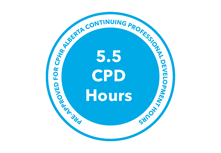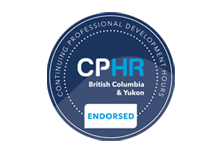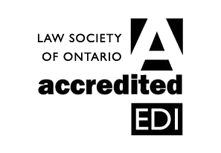

5.25 CPD hours

45 mins
This program has also been approved for 5.0 hours of CPD credits by the Law Society of British Columbia and 5.0 hours by the Law Society of Saskatchewan.
Registration & virtual orientation
Opening remarks from Key Media

Mark Montpetit
Senior Legal Conference Producer, Key Media
New developments from the courts and updates on BC employment standards
New case law developments impacting employer obligations and changes to BC’s Employment Standards Act have meant that organizations need to continually monitor their employment law files to ensure they stay updated on the latest legal developments. This session will provide an overview of recent decisions from the courts, new and updated employment legislation, as well as a preview of trends emerging in 2022.
- New measures and updates to the Employment Standards Act and related legislation
- Updates on recent case law decisions and tribunal rulings
- COVID-19-related amendments impacting working conditions, investigations and leave
- Top takeaways for employers as we transition into 2022

Janet Olawsky
Associate, Harris & Company LLP
Workplace vaccinations: Guidance for compliance, exemptions and vaccine policy
With many employees now fully vaccinated, employers will need to assess how progress in this area will impact their workplace environment and how to deal with employees who remain unvaccinated. How have recent case law decisions and changes to employment standards impacted an employer’s ability to mandate vaccines? What factors determine how employers should respond if employees refuse vaccines? How should employers assess exemption requests based on religious or medical reasons?
- Recent case decisions on workplace vaccines and new legislative developments
- Employer options with respect to those who do not qualify for exemptions and are in violation of the organization’s vaccine policy: penalties and terminations
- The importance of having a vaccine policy in place and how to communicate this
- Vaccine policy and the impact on work-from-home employees and those on leave of absence
- How might third-dose requirements and new variants impact mandates

Taylor Buckley
Senior Associate, Dentons Canada LLP
Networking and coffee break
Accommodation in the workplace: Changing employer obligations in the COVID-19 landscape
The continual impact of the pandemic on workplaces has introduced more complex accommodation challenges and related issues for organizations. When it comes to employees with chronic health disabilities or family obligations, employers need to be mindful of their duty to accommodate. What types of new accommodation challenges are employers facing, and how should they best respond? What proactive steps do employers need to take to ensure they are properly accommodating employees’ needs to avoid future litigation, while ensuring they are protecting their organizations’ interests? In this presentation, we will cover:
- Understanding an employer’s duty to accommodate
- Accommodating employees on return from extended leaves of absence
- When and how to seek medical information from employees
- COVID-19 and related employee anxieties – when do you need to accommodate?
- Best practices and practical tips

Ellen Ferguson
Associate, Harris & Company LLP

Madeline MacDonald
Associate, Harris & Company LLP
Employee retention: Best practices for retaining your employees and reducing workforce turnover
The effects of COVID-19 have added additional strain to the employer–employee relationship and workplaces across multiple industries. As the pandemic comes under greater control and worksites begin to normalize, a hot job market and pandemic fatigue may tempt even your most loyal employees to look for new job opportunities. Fortunately, there are ways employers can mitigate this risk to retain critical staff and increase employee engagement. What are some practical steps organizations can take to improve their retention strategies and the overall quality of their work environments?
- Latest factors, trends and changing values driving increased turnover
- Updating your compensation, benefit and promotion/advancement policies
- Understanding the role of flex work and leave of absence policies
- Addressing the nuances of the ‘right to disconnect’ to avoid burnout
- How to incorporate retention strategies within your employee contracts
- When should you use restrictive covenants?
- Creating a positive and supportive workplace culture

Kristen L. Cruise
Associate, Gowling WLG

Maxwell J. Brunette
Partner, Employment & Labour Law Practice Group Leader, Gowling WLG
Lunch break
Workplace health and safety update: Navigating the complex new reality
As COVID-19 continues to impact organizations, and employees return to the office or adapt to a hybrid work schedule, employers are confronted with various practical challenges in maintaining and ensuring a safe and healthy workplace. What are some best practices that have proven effective to date in providing a safe workspace? How are organizations responding to the increased complexity of health and safety regulations?
- Understanding an employer’s duty to provide a safe work environment
- Overview and update on current provincial and local health and safety guidelines
- On-site health and safety policies and protocols: How to address violations
- Dealing with workplace outbreaks; reporting requirements, privacy and employee testing
- Practical issues when ensuring employee health and safety in a hybrid work setting

Christopher Drinovz
Partner, Employment & Labour Group, Kane Shannon Weiler LLP
Navigating terminations and wrongful dismissal claims
Terminations can be a lengthy and difficult process for many organizations and can carry the risk of wrongful termination claims if not handled properly. Further, recent court decisions may lead to an increased risk of wrongful termination claims for employers, which can result in higher severance payments and damages. What can employers do to better protect themselves throughout the termination process? How might changes to their contract drafting help mitigate future liabilities?
- Understanding what constitutes wrongful dismissal in BC – and how does COVID-19 impact this?
- Managing the termination process – adequate notice, severance payments, and just cause
- Overview of recent case law on wrongful dismissal claims
- You have received a wrongful dismissal claim – now what?
- Documenting performance evaluations, reviews and disciplinary action: How does a hybrid workplace impact this?
- Tips for drafting enforceable termination clauses to minimize liability

Jennifer Wiegele
Partner, Mathews, Dinsdale & Clark LLP
Case study: Bullying, harassment and violence in the workplace
All employees have a legal right to a workplace environment that's free from the threat of bullying, harassment and violence. Employers need to have policies and protocols in place in advance, be prepared to recognize and respond to bullying and harassment, and investigate a situation when required. This case study will explore a bullying and harassment workplace scenario to help HR professionals prepare for when a future incident is reported. What proactive measures and steps do employers need to take to ensure they are following their legal obligations?
- What is, and what is not, bullying and harassment in the workplace
- The importance of updating your workplace policies, procedures and prevention plans
- How to investigate incidents and reports of bullying and harassment
- The nuances of difficult management styles, performance reviews, and toxic environments and their relationships to bullying and harassment

Taryn Mackie
Partner, Norton Rose Fulbright Canada LLP
Networking and coffee break: Q&A ‘Ask the Experts’ breakout
Have a question or comment for our panel of employment law experts? Join this short question and answer session to hear the answers to your most important HR and employment law queries.

Ryley Mennie
Principal Lawyer + Lead, Workplace Law Group, Miller Titerle

Taryn Mackie
Partner, Norton Rose Fulbright Canada LLP

Janet Olawsky
Associate, Harris & Company LLP
Panel: Diversity, equity and inclusion in the workplace – a practical update for HR professionals
This session will begin with a brief update on pay equity legislation and the new federal Pay Equity Act. A panel discussion will follow with a conversation on the rules, regulations and obligations employers need to mindful of when integrating diversity and inclusion policies and protocols into the workplace. They will also share some practical tips, advice and best practices for achieving positive DEI outcomes.
A. Update on the federal Pay Equity Act
- Who does this impact and how will this affect your organization’s compensation and HR strategy?
- Key considerations for employers impacted by this legislation

Ryley Mennie
Principal Lawyer + Lead, Workplace Law Group, Miller Titerle
B. Panel discussion: Diversity, equity and inclusion in the workplace
- Update on provincial and federal human rights legislation – what are the typical vulnerabilities for employers?
- Addressing gender identity and expression; multigenerational workforces
- Ensuring policies are in place and progress is measured and documented
- How can employers effectively implement DEI programs in a hybrid work environment?
- Discuss how DEI efforts can be more sustainable and why equity is critical to a program’s future success
Moderator:
Panelists:


Tamara Napoleon
Principal Lawyer, Co-Lead, Indigenous Law Group + Managing Principal, Miller Titerle




